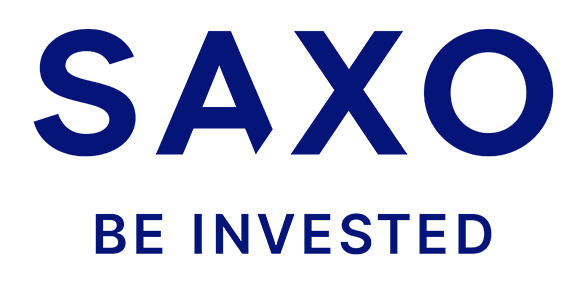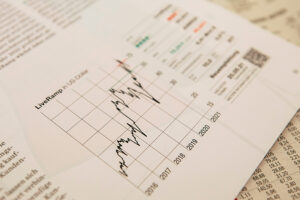How to invest in lead? Stock market and ETN [Guide]
Lead has been known since antiquity. This was due to the fact that lead often formed galena together with silver. Galena was then roasted to get clean silver. Lead was a by-product that had little use. Lead was used in Ancient Egypt as one of the materials used in the production of cosmetics. The real boom for this raw material fell on Roman times. In the Republic and then the Empire, lead was used, among others, in for the production of water pipes. The reason was ease of processing and resistance to corrosion. This raw material was then very common. Annual production was 80 tons, which was unbeatable until the industrial revolution.
During the Middle Ages and Renaissance, lead was not as popular as it was in antiquity. It was mainly used for machine parts (e.g. printing machines), for the production of roofs and pipes. Over time, some lead was added to the wine, which caused numerous poisonings. Over time, musket balls began to be made of lead. Lead was also used in cosmetics during this period. It was used as a face whitening material.
Industrial Revolution - return to massive lead mining
The increase in lead mining dates back to the beginning of the industrial revolution. This raw material was used in plumbing and painting. The reason for the use of this element in painting was because paints with lead were waterproof. Lead paints were popular at the turn of the XNUMXth century.
Already in the XNUMXth century, a law began to appear that was supposed to limit the exposure of workers to lead poisoning. With the withdrawal of lead products from use, there has been a decrease in the number of poisonings. In the second half of the XNUMXth century, people came into contact with lead mainly through refueling with "leaded" gasoline and lead-acid batteries.
Currently, lead is extracted from ores or as salvage from scrap. The largest producers of lead include China (2 million tonnes), Australia (0,5 million tonnes) and the United States (0,3 million tonnes). In turn, in the case of refined lead, China, the United States and South Korea are in the lead.
Current uses of lead
Lead is a very dense metal with a low melting point. He's pretty unreactive. Due to the fact that it is not subject to corrosion, it is used e.g. as a cover for underwater cables (less and less often). High density and non-reactivity makes lead used in barriers against vibration, radiation and sound. Lead is used in production anti-radiation shields e.g. for x-ray examinations.
How to invest in lead?
It is not a very popular investment instrument. It is a much more important metal for the economy copper. Despite this, lead is the underlying instrument in derivatives. Futures contracts for this commodity are available on the CME exchange.
One contract is worth 25 tons. It is quoted in dollars per ton.
The turnover on this instrument is meager. For this reason, it is not a very good instrument for conducting speculative transactions.
There is still an opportunity to invest in ETNs giving exposure to the lead market. It belongs to the most popular of them iPath® Bloomberg Lead Subindex Total Return ETN. It is an unsecured debt instrument designed to track the Bloomberg Lead Subindex Total Return. The issuer of this debt note is Barclays Bank PLC. Over the past 3 years, the ETN has generated an average annual rate of return of 5,44%which was lower than the benchmark (5,63%). However, since the release ETN achieved an average annual return of -0,57%. The annual management fee is substantial at 0,7% per annum. ETN was launched in 2008 and expires in 2038.
Another idea is to invest in companies that extract raw materials. Most publicly traded, well-known mining companies are not just lead miners. For this reason, when you buy such a company, you get exposure to a basket of commodities rather than to lead alone. Below are examples of companies that can give just such exposure.
Shenzhen Zhongjin Lingnan Nonfemet Co. Ltd
Since China is the largest producer of lead, it is worth looking for companies involved in the production and trade of this metal. Shenzhen Zhongjin Lingnan Nonfemet Co. is the largest publicly traded producer of lead in China. Ltd. It is a company that extracts and processes many industrial raw materials. The company's main products include zinc, lead and copper concentrates. In addition, the company supplies tin and lead ingots. What's more, the company also operates on the cadmium, silver and gold. The company was founded in 1984 and its headquarters are located in Shenzhen.
| CNY million | 2019 | 2020 | 2021 |
| revenues | 22 837,5 | 30 252,8 | 44 499,6 |
| Operational profit | 847,3 | 926,4 | 1 409,4 |
| Operating margin | Present in several = 3,7% | Present in several = 3,1% | Present in several = 3,2% |
| Net profit | 852,1 | 995,1 | 1 171,7 |
Source: own study
Glencore
Another option is to purchase Glencore shares. Also this company is not a pure lead producer. It has very dispersed activities related to the extraction, refining, processing, storage, transport and trading of raw materials. The company deals with the production and trade of such raw materials as: copper, cobalt, nickel, cynk, lead, chromium, vanadium, aluminum material, iron, coal, petroleum and natural gas.
| million USD | 2019 | 2020 | 2021 | 2022 |
| revenues | 215 111 | 142 338 | 203 751 | 255 984 |
| Operational profit | 3 286 | 2 017 | 10 388 | 24 831 |
| Operating margin | Present in several = 1,5% | Present in several = 1,4% | Present in several = 5,1% | Present in several = 9,7% |
| Net profit | -404 | -1 903 | 4 974 | 17 320 |
Source: own study
Brokers offering stocks, ETFs, commodities
How to invest in lead? As we mentioned, this is not an easy task. In addition to the mentioned ETN, we can use the services of brokers offering access to foreign stock markets. An increasing number of forex brokers have quite a rich offer of stocks, ETFs and CFDs on stocks.
For example on XTB Today, we can find over 3500 equity instruments and 400 ETFs, a Saxo Bank over 19 companies and 000 ETF funds.
| Broker |  |
 |
 |
| End | Poland | Denmark | Cyprus * |
| Number of exchanges on offer | 16 exchanges | 37 exchanges | 24 exchanges |
| Number of shares in the offer | approx. 3500 - shares circa 2000 - CFDs on shares |
19 - shares 8 - CFDs on shares |
approx. 3 - CFD on shares |
| The amount of ETF on offer | approx. 400 - ETF approx. 170 - CFD on ETF |
3000 - ETF 675 - CFD on ETF |
approx. 100 - CFD on ETF |
| Commission | 0% commission up to EUR 100 turnover / month | according to the price list | Spread depends on the instrument |
| Min. Deposit | PLN 0 (recommended min. PLN 2000 or USD 500, EUR) |
0 PLN / 0 EUR / 0 USD | PLN 500 |
| Platform | xStation | SaxoTrader Pro Saxo Trader Go |
Plus500 platform |
* PLUS500 CY offer
CFDs are complex instruments and involve a high risk of a quick loss of cash due to leverage. 76% of retail investor accounts record monetary losses as a result of trading CFDs with this CFD provider. Consider whether you understand how CFDs work and whether you can afford the high risk of losing your money.
Summation
Investing in lead is certainly not one of the most popular activities of market participants. No wonder, the derivatives market is very underdeveloped. What's worse, there are no companies on the stock exchange that mostly operate on the lead market. In most cases, companies operating on the industrial metals market treat lead as their side business. It seems that exposure to industrial metals can be achieved in simpler ways, such as copper.






















![Forex Club – Tax 9 – Settle tax on a foreign broker [Download the Application] Forex Club - Tax 9](https://forexclub.pl/wp-content/uploads/2024/02/Forex-Club-Podatek-9-184x120.jpg?v=1709046278)
![Trading View platform – solutions tailored to the needs of traders [Review] trading view review](https://forexclub.pl/wp-content/uploads/2024/03/trading-view-recenzja-184x120.jpg?v=1709558918)
![How to connect your FP Markets account to the Trading View platform [Guide] fp markets trading view](https://forexclub.pl/wp-content/uploads/2024/02/fp-markets-trading-view-184x120.jpg?v=1708677291)
![How to invest in ChatGPT and AI? Stocks and ETFs [Guide] how to invest in chatgpt and artificial intelligence](https://forexclub.pl/wp-content/uploads/2023/02/jak-inwestowac-w-chatgpt-i-sztuczna-inteligencje-184x120.jpg?v=1676364263)





![Izabela Górecka – “Success on the market depends not only on knowledge, but also on emotional stability” [Interview] Izabela Górecka - interview](https://forexclub.pl/wp-content/uploads/2024/04/Izabela-Gorecka-wywiad-184x120.jpg?v=1713870578)
![WeWork – the anatomy of the collapse of a company valued at $47 billion [WeWork, part II] wework bankruptcy story](https://forexclub.pl/wp-content/uploads/2024/04/wework-bankructwo-historia-184x120.jpg?v=1711729561)
![Adam Neumann – the man who screwed up Softbank [WeWork, part AND] adam neumann wework](https://forexclub.pl/wp-content/uploads/2024/04/adam-neumann-wework-184x120.jpg?v=1711728724)



![The most common mistakes of a beginner trader - Mr Yogi [VIDEO] Scalping - The most common mistakes of a beginner trader - VIDEO](https://forexclub.pl/wp-content/uploads/2024/03/Scalping-Najczestsze-bledy-poczatkujacego-tradera-VIDEO-184x120.jpg?v=1711601376)
![Learning patience: No position is also a position - Mr Yogi [VIDEO] Scalping - Learning patience - No position is also a position - VIDEO](https://forexclub.pl/wp-content/uploads/2024/03/Scalping-Nauka-cierpliwosci-Brak-pozycji-to-tez-pozycja-VIDEO-184x120.jpg?v=1710999249)
![When to exit a position and how to minimize losses - Mr Yogi [VIDEO] Scalping - When to exit a position and how to minimize losses - VIDEO](https://forexclub.pl/wp-content/uploads/2024/03/Scalping-Kiedy-wyjsc-z-pozycji-i-jak-minimalizowac-straty-VIDEO-184x120.jpg?v=1710336731)



![How to invest in lead? Stock market and ETN [Guide] how to invest in lead](https://forexclub.pl/wp-content/uploads/2023/04/jak-inwestowac-w-olow.jpg?v=1680337658)



![How to invest in lead? Stock market and ETN [Guide] chocolate](https://forexclub.pl/wp-content/uploads/2023/04/czekolada-102x65.jpg?v=1680600736)
![How to invest in lead? Stock market and ETN [Guide] gold price 2021](https://forexclub.pl/wp-content/uploads/2021/06/cena-zlota-2021-102x65.jpg?v=1623657753)










Leave a Response